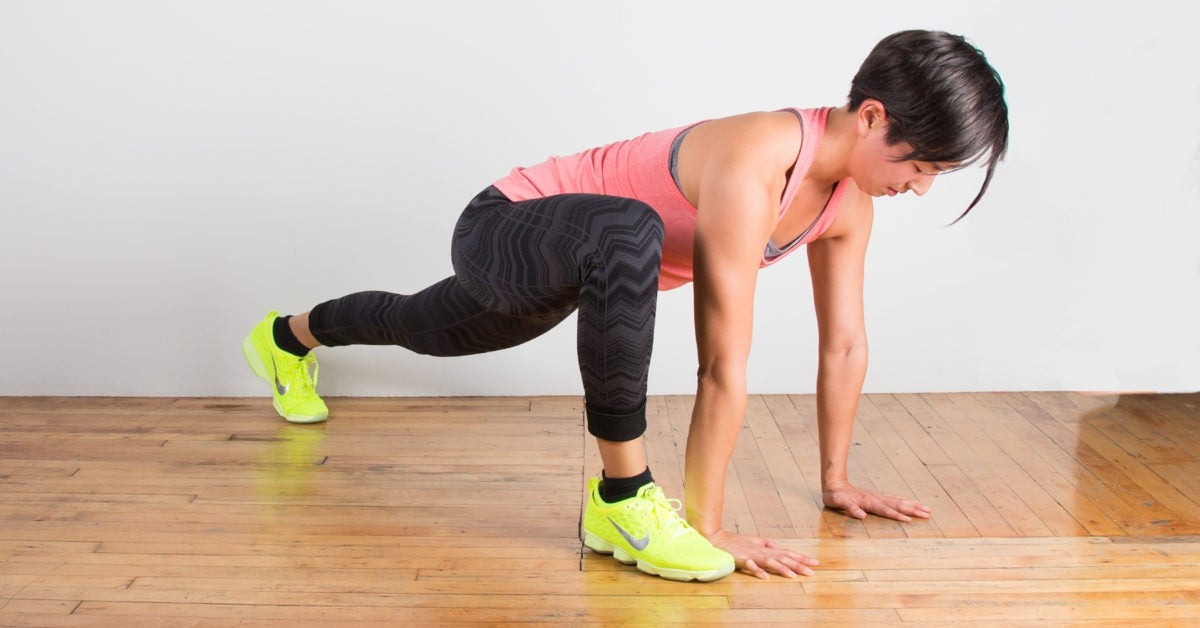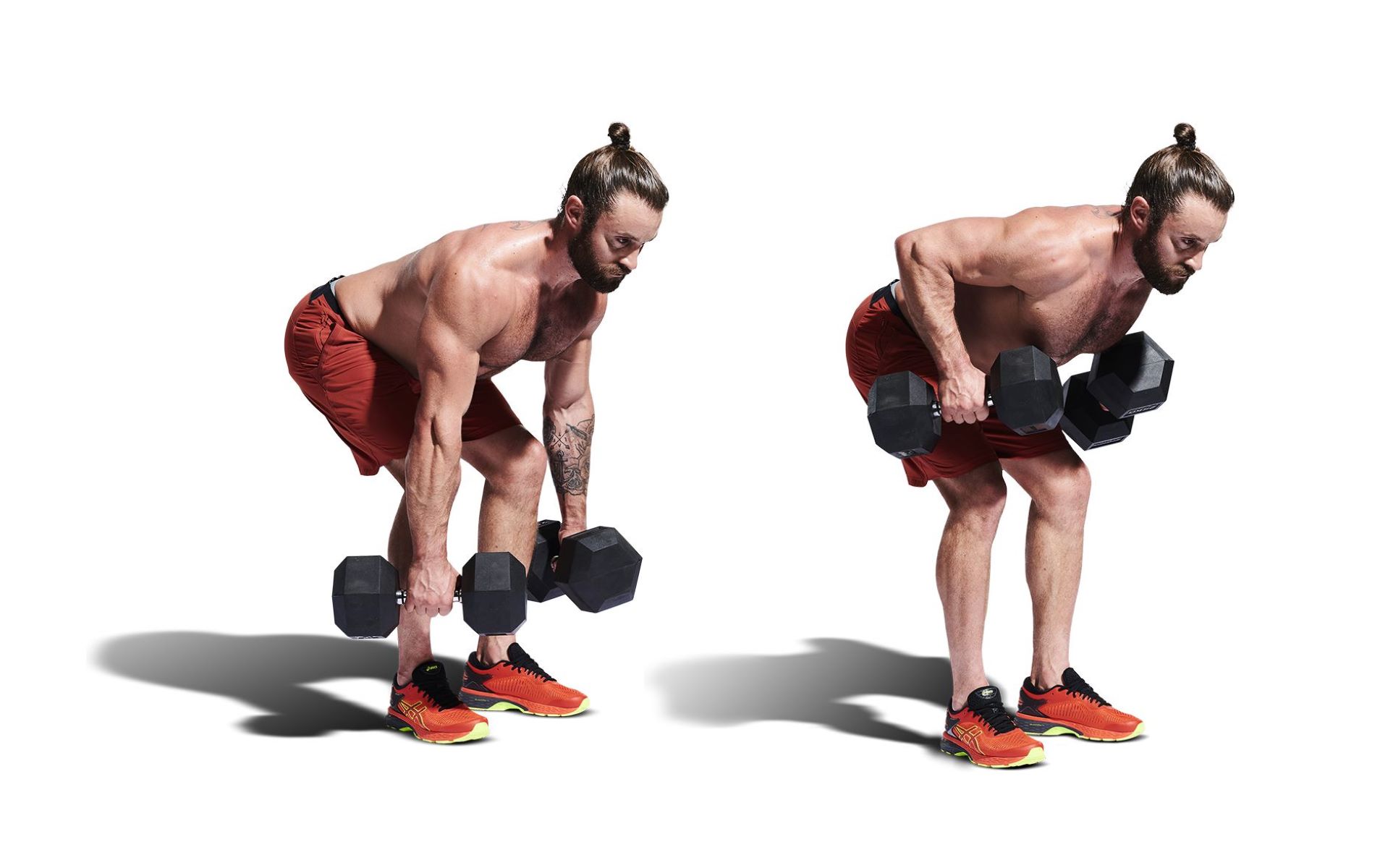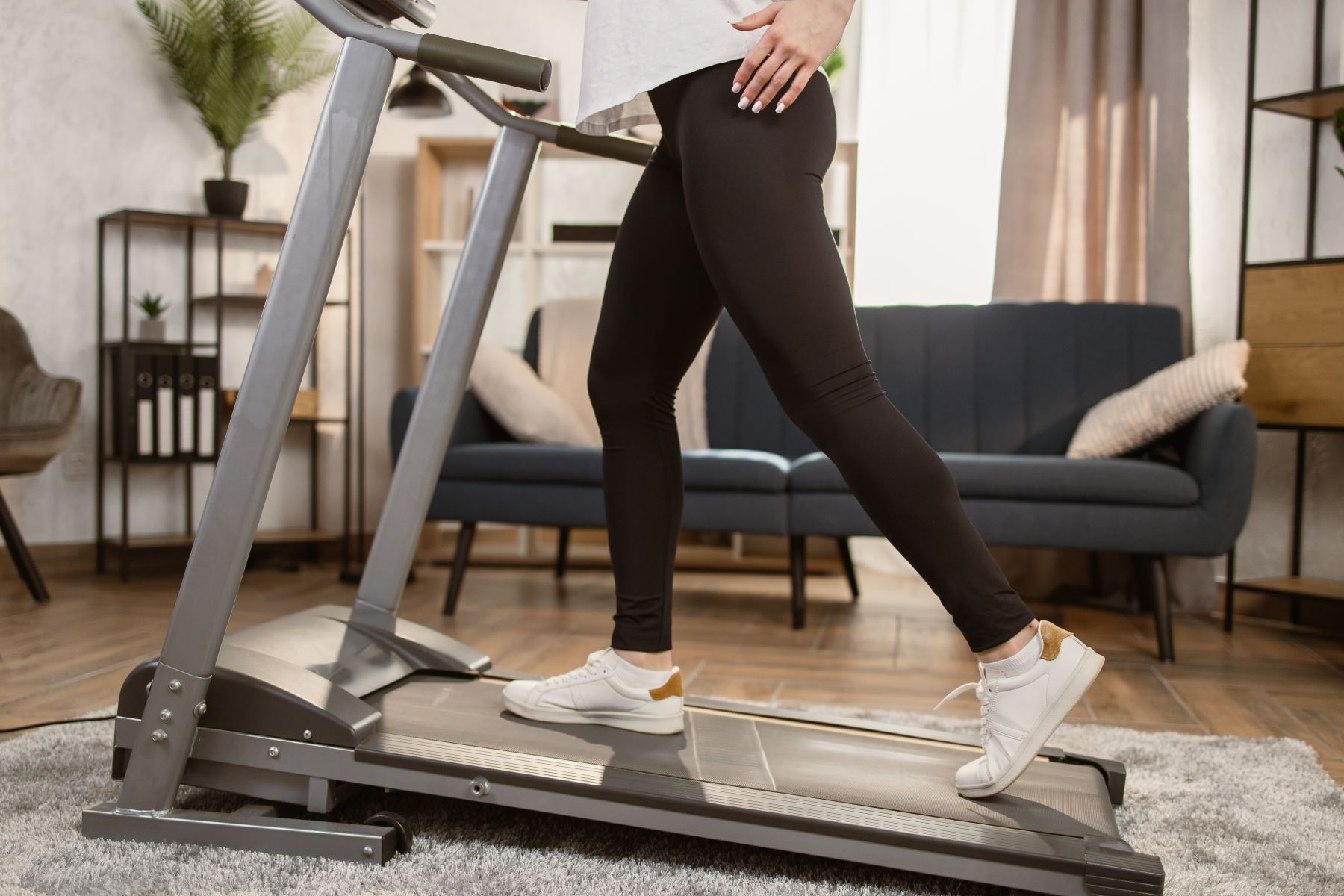Home>Misc>Featured>How To Do Interval Training On Workout Machines


Featured
How To Do Interval Training On Workout Machines
Modified: January 22, 2024
Discover the benefits of interval training on featured workout machines and learn how to incorporate this effective workout technique into your fitness routine.
Introduction
Welcome to the world of interval training on workout machines! If you’re looking to take your fitness routine to the next level and achieve faster results, interval training is the way to go. By incorporating bursts of high-intensity exercise followed by periods of active recovery, interval training helps to improve cardiovascular endurance, burn calories, and increase overall strength and stamina.
In this article, we will explore the concept of interval training, its numerous benefits, and how to effectively perform interval training workouts on different types of workout machines like treadmills, ellipticals, and stationary bikes. Whether you’re a beginner or a seasoned gym-goer, you’ll find valuable insights and practical tips to incorporate interval training into your fitness regimen.
Interval training is highly versatile and can be customized to suit your fitness level and goals. It allows you to push your limits and challenge yourself, while still ensuring adequate recovery time for your body. So, whether you’re aiming to improve your cardiovascular health, burn fat, or enhance overall athletic performance, interval training can be a game-changer.
Before we dive into the specifics of interval training on workout machines, let’s understand the science behind this training technique and the benefits it offers. By the end of this article, you’ll be armed with all the knowledge you need to create effective interval training workouts that will transform your fitness journey.
What is Interval Training?
Interval training is a training technique that alternates between periods of high-intensity exercise and short periods of rest or light activity. The idea behind interval training is to push your body to work at a higher intensity for a shorter duration, followed by a brief recovery phase to allow your heart rate to come back down. This cycle is then repeated for a specific number of intervals.
Unlike traditional steady-state cardio exercises, where you maintain a constant intensity throughout the entire workout, interval training allows you to maximize your efforts in a shorter amount of time. By challenging your body with intense bursts of exercise, you can elevate your heart rate and burn more calories than you would during a longer, moderate-intensity workout.
Interval training can be applied to various forms of cardiovascular exercises, including running, cycling, swimming, or using workout machines like treadmills, ellipticals, and stationary bikes. The key is to incorporate high-intensity intervals that push you outside of your comfort zone and periods of active recovery that allow your body to recuperate.
During the high-intensity intervals, your body switches to anaerobic metabolism, relying on stored carbohydrates for fuel. This leads to an increased production of lactic acid, causing the muscles to fatigue. The active recovery periods help to remove the lactic acid buildup and enable your body to efficiently use oxygen as a fuel source, engaging aerobic metabolism.
Interval training is highly effective for improving cardiovascular endurance, as it challenges your heart and lungs to adapt to quick changes in intensity. It also offers benefits such as increased calorie burn, improved insulin sensitivity, enhanced fat burning, and an overall boost in metabolic rate.
Whether you’re a beginner or an advanced fitness enthusiast, interval training can be tailored to suit your fitness level and goals. The duration and intensity of the intervals, as well as the length of the recovery periods, can be adjusted based on your individual capabilities and desired outcomes.
Now that you have a clear understanding of what interval training entails, let’s explore the many benefits it offers and why incorporating it into your workout routine can take your fitness journey to new heights.
Benefits of Interval Training
Interval training offers a myriad of benefits that make it a popular and effective training method for improving overall fitness. Let’s explore some of the key advantages of incorporating interval training into your workouts:
- Increased calorie burn: Interval training is an excellent way to torch calories in a shorter amount of time. The high-intensity intervals push your body into overdrive, resulting in a higher metabolic rate even after the workout is complete. This means that you continue to burn calories long after your workout session.
- Improved cardiovascular endurance: By working your cardiovascular system at different intensity levels, interval training helps to strengthen your heart and lungs. This leads to improved oxygen delivery to your muscles and enhanced overall endurance. Over time, you’ll find that you can exercise for longer periods of time without fatigue.
- Enhanced fat burning: Interval training has been shown to be extremely effective for burning fat. The bursts of high-intensity exercise stimulate your body to tap into its fat stores for energy. This, in turn, helps to reduce body fat percentage and improve body composition.
- Increased metabolic rate: The intense effort during interval training sessions not only burns calories during the workout but also elevates your metabolic rate for hours afterward. This post-workout boost in metabolism leads to increased calorie expenditure, further aiding in weight loss and weight maintenance.
- Time-efficient: One of the biggest advantages of interval training is that it allows you to get a highly effective workout in a short amount of time. With interval training, you can achieve the same benefits as a longer steady-state workout in just 20-30 minutes, making it ideal for those with busy schedules.
- Improved anaerobic capacity: The high-intensity intervals in interval training push your body to its anaerobic threshold, enhancing your ability to perform strenuous activities. Over time, you’ll notice an increase in your anaerobic capacity, allowing you to perform better in activities that require short bursts of intense effort, such as sprinting or HIIT workouts.
These are just a few of the many benefits that interval training offers. Whether you’re looking to lose weight, improve endurance, or boost overall athletic performance, incorporating interval training into your workout routine can help you reach your goals more efficiently and effectively.
Types of Workout Machines for Interval Training
Interval training can be performed on a variety of workout machines, each offering unique benefits and targeting different muscle groups. Let’s explore some of the most popular machines for interval training:
- Treadmill: The treadmill is a versatile machine that allows you to perform a wide range of interval training workouts. You can adjust the speed and incline to create challenging intervals that simulate outdoor running or walking. The treadmill is excellent for cardiovascular conditioning and improving lower body strength.
- Elliptical: The elliptical machine provides a low-impact workout that is easy on the joints while still delivering an intense cardiovascular workout. With adjustable resistance and incline options, you can customize your intervals to target different muscle groups, including the legs, glutes, and core.
- Stationary Bike: The stationary bike is a great option for interval training, especially for those with joint issues or injuries. It provides a low-impact workout that still challenges your cardiovascular system and lower body muscles. You can adjust the resistance and speed to create high-intensity intervals that build strength and endurance.
- Rowing Machine: The rowing machine is a full-body workout machine that engages multiple muscle groups, including the legs, core, arms, and back. It provides a great cardiovascular workout while promoting upper body and core strength. Rowing machine intervals can be highly effective for burning calories and improving overall fitness.
- Stair Climber: The stair climber, also known as the step machine, is an excellent choice for interval training that targets the lower body muscles, including the glutes, quadriceps, and hamstrings. The stepping motion simulates climbing stairs, making it an effective exercise for building leg strength and boosting cardiovascular endurance.
- VersaClimber: The VersaClimber is a total-body workout machine that mimics the climbing motion. It engages the upper and lower body muscles, making it a great choice for interval training that targets multiple muscle groups simultaneously. The VersaClimber provides a high-intensity workout that can help improve strength, endurance, and overall cardiovascular fitness.
These are just a few examples of workout machines that are commonly used for interval training. Depending on your fitness goals, preferences, and the equipment available at your gym, you can choose the machine that suits you best. Remember to adjust the settings and resistance levels to match your fitness level and properly challenge yourself during the high-intensity intervals.
Now that you know the types of workout machines available for interval training, let’s move on to how to prepare for a successful interval training session.
Preparing for Interval Training
Proper preparation is key to getting the most out of your interval training sessions. Follow these steps to ensure you’re ready for a successful workout:
- Consult with your healthcare provider: Before starting any new exercise program, it’s important to consult with your healthcare provider, especially if you have any pre-existing medical conditions or concerns. They can provide guidance on whether interval training is suitable for you and offer any necessary modifications.
- Set your goals: Determine what you want to achieve with your interval training workouts. Whether it’s improving cardiovascular fitness, increasing strength, or losing weight, having clear goals will help you tailor your workouts and track your progress along the way.
- Choose the right workout machine: Select the workout machine that aligns with your goals and preferences. Consider factors such as impact level, muscle groups targeted, and overall effectiveness for interval training. If you have access to multiple machines, you can switch them up to add variety to your workouts.
- Wear proper workout attire: Dress comfortably in moisture-wicking clothing and supportive footwear that allows for free movement. This will help you stay cool, prevent chafing, and provide adequate support during the high-intensity intervals.
- Stay hydrated: Hydration is crucial during any workout, including interval training. Drink plenty of water before, during, and after your session to stay properly hydrated and maintain optimal performance. Consider carrying a water bottle with you during your workouts for easy access.
- Warm up: Before diving into high-intensity intervals, it’s essential to warm up your muscles and prepare your body for the workout. Spend 5-10 minutes engaging in light cardio exercises like brisk walking, jogging, or cycling at a moderate pace. This will increase blood flow, raise your core body temperature, and prevent any potential injuries.
- Choose interval durations: Determine the duration of your high-intensity intervals and recovery periods based on your fitness level, goals, and the workout machine you’re using. It’s recommended to start with shorter intervals and gradually increase the intensity and duration as your fitness improves.
- Listen to your body: Pay attention to how your body feels during the workout. Interval training can be intense, so it’s important to listen to any warning signs of fatigue, pain, or discomfort. If needed, adjust the intensity or take longer recovery periods to ensure your safety and prevent overexertion.
By following these preparatory steps, you’ll be ready to tackle your interval training workouts with confidence. Now let’s move on to setting up the workout machines for effective interval training sessions.
Setting Up the Workout Machines
Properly setting up the workout machines is crucial for a safe and effective interval training session. Follow these steps to ensure the machines are set up correctly:
- Treadmill: Adjust the speed and incline of the treadmill to match your fitness level and the planned intensity of your intervals. Start with a comfortable walking or jogging pace during the recovery periods, and increase the speed for the high-intensity intervals. Gradually increase the incline to add more challenge and engage different muscle groups.
- Elliptical: Set the resistance level and incline on the elliptical machine based on your fitness level and desired intensity. Increase the resistance for the high-intensity intervals to make your muscles work harder. Adjust the incline to target different muscle groups or simulate climbing hills. Maintain proper form by standing tall, gripping the handles lightly, and using a smooth and controlled motion.
- Stationary Bike: Adjust the resistance level on the stationary bike to create the desired challenge during the high-intensity intervals. Increase the resistance for a tougher workout that engages your leg muscles. Ensure proper seat height and positioning to maintain proper form and prevent strain on your knees and back.
- Rowing Machine: Set the resistance level on the rowing machine to match your fitness level and the planned intensity of your intervals. Start with a lower resistance during the recovery periods and increase it for the high-intensity intervals to provide a more challenging workout. Maintain a proper rowing technique by sitting tall, bending your knees and hips, and driving your legs, followed by a strong pull with your arms and upper back.
- Stair Climber: Adjust the speed and resistance level on the stair climber to align with your fitness level and the targeted intensity of your intervals. Increase the speed for high-intensity intervals and decrease it for recovery periods. Adjust the resistance level to provide more resistance and challenge for your leg muscles.
- VersaClimber: Set the resistance level on the VersaClimber to match your fitness level and the intensity of your intervals. Start with a lower resistance during the recovery periods and increase it for the high-intensity intervals. Engage both your arms and legs while using a smooth and controlled motion. Maintain proper form by standing tall, keeping your core engaged, and gripping the handles firmly.
Take the time to familiarize yourself with the specific controls and settings of the workout machine you’re using. Follow the manufacturer’s instructions for proper use and safety precautions. Adjust the settings prior to starting your interval training session to ensure a smooth and uninterrupted workout.
Now that you have set up the workout machines, it’s time to warm up your body with some preparatory exercises before diving into the high-intensity interval training workouts.
Warm-up Exercises
A proper warm-up is essential before starting any interval training session. It helps prepare your body for the upcoming high-intensity intervals and reduces the risk of injuries. Follow these warm-up exercises to get your body ready for the workout:
- Brisk Walking or Jogging: Begin your warm-up with a few minutes of brisk walking or jogging on the treadmill, elliptical, or outside. This will increase your heart rate, warm up your muscles, and gradually elevate your body temperature.
- Dynamic Stretches: Perform a series of dynamic stretches that target major muscle groups. Include exercises like leg swings, arm circles, hip circles, and torso twists. Dynamic stretching helps to improve range of motion and activates your muscles for the upcoming workout.
- High Knees: Stand in place and march while lifting your knees as high as comfortably possible. Aim to bring your knees up to waist level and pump your arms to engage the upper body. Perform this exercise for about 30 seconds to further warm up your leg muscles.
- Lunges or Squats: Perform lunges or squats to engage your lower body muscles. Alternate between forward lunges, backward lunges, and bodyweight squats. This will activate your quads, hamstrings, glutes, and hip muscles, preparing them for the upcoming workout.
- Arm Circles: Extend your arms to the sides at shoulder height. Make small circles with your arms, gradually increasing the range of motion. After a few seconds, switch direction and make circles in the opposite direction. This exercise helps to warm up your shoulder muscles and improve mobility.
- Core Activation Exercises: Include exercises that engage your core muscles, such as planks or standing side bends. These exercises will help activate your core and stabilize your body during the intense intervals of your workout.
Perform each warm-up exercise for about 30 seconds to 1 minute, gradually increasing the intensity as your body warms up. Take deep breaths and listen to your body throughout the warm-up process. If any exercise feels uncomfortable or causes pain, modify or skip it to prevent injury.
Remember, the warm-up should be dynamic and focused on increasing blood flow, activating muscles, and preparing your body for the upcoming high-intensity intervals. Once you’ve completed the warm-up, you’re ready to dive into the interval training workouts on your chosen workout machine.
Interval Training Workouts on Treadmill
The treadmill is a popular choice for interval training due to its versatility and ability to mimic outdoor running conditions. Here are a few interval training workouts you can try on the treadmill:
- Speed Intervals: Start with a 5-minute warm-up at a comfortable pace. Then, increase the speed to a challenging level for 1 minute, aiming for a fast sprint. Follow it with a 1-minute recovery period of slower jogging or brisk walking. Repeat this cycle for a total of 8-10 intervals. Finish with a 5-minute cooldown at an easy pace.
- Incline Intervals: Begin with a 5-minute warm-up at a moderate incline. Increase the incline to a challenging level for 2 minutes, focusing on maintaining a steady pace. Follow it with a 2-minute recovery period at a lower incline. Repeat this cycle for 6-8 intervals. End with a 5-minute cooldown at a flat or slightly inclined surface.
- Alternating Speed and Incline: Perform a 5-minute warm-up at a comfortable pace. Then, alternate between increasing the speed and the incline for each interval. For example, do a 1-minute sprint at a challenging speed followed by a 2-minute recovery period at a moderate pace but with a high incline. Repeat this cycle for 6-8 intervals. Finish with a 5-minute cooldown at an easy pace.
- PYRAMID Intervals: Begin with a 5-minute warm-up at a moderate pace. Start the first interval with a 30-second sprint at a challenging speed, followed by a 30-second recovery period. Then, increase the sprint and recovery durations to 45 seconds, 1 minute, and 1 minute 15 seconds. Once you reach 1 minute 15 seconds, gradually decrease the durations back down to 30 seconds. Repeat this pyramid cycle for a total of 2-3 times. Conclude with a 5-minute cooldown at an easy pace.
- Interval Hills: Perform a 5-minute warm-up at a moderate pace. Alternate between high-intensity intervals on incline and recovery periods on flat terrain. For example, do a 2-minute sprint at a challenging incline, followed by a 1-minute recovery period at a flat surface. Repeat this cycle for 4-6 intervals. Finish with a 5-minute cooldown at an easy pace.
These are just a few examples of interval training workouts you can perform on the treadmill. Customize the durations, intensities, and recovery periods based on your fitness level and goals. Gradually increase the difficulty of your workouts as your fitness improves.
Remember, safety should always be a priority. Pay attention to your form, stay hydrated, and listen to your body. If you’re new to interval training or have any underlying health concerns, consider consulting with a fitness professional to ensure you’re performing the workouts correctly and at a suitable intensity level.
Now, let’s explore interval training workouts on another popular workout machine, the elliptical.
Interval Training Workouts on Elliptical
The elliptical machine is a versatile and low-impact option for interval training workouts. Here are some effective interval training workouts you can try on the elliptical:
- Sprint Intervals: Start with a 5-minute warm-up at a comfortable pace. Then, increase the resistance and speed to a challenging level for 1 minute, aiming for a fast sprint-like motion. Follow it with a 1-minute recovery period at a lower resistance and slower pace. Repeat this cycle for a total of 8-10 intervals. Finish with a 5-minute cooldown at an easy pace.
- Hill Intervals: Begin with a 5-minute warm-up at a moderate resistance. Increase the resistance to a challenging level and use the handles to simulate an uphill climb for 2 minutes. Follow it with a 2-minute recovery period at a lower resistance and speed. Repeat this cycle for 6-8 intervals. End with a 5-minute cooldown at an easy resistance.
- Tabata Intervals: Perform a 5-minute warm-up at a comfortable resistance. Then, alternate between 20 seconds of all-out effort at a high resistance and speed and 10 seconds of complete rest. Repeat this cycle for a total of 8 intervals, which amounts to 4 minutes. Take a 1-minute recovery period at a lower resistance and slower pace, and then repeat the Tabata cycle for another 8 intervals. Finish with a 5-minute cooldown at an easy resistance.
- PYRAMID Intervals: Begin with a 5-minute warm-up at a moderate resistance. Start by increasing the resistance and speed for 30 seconds, followed by a 30-second recovery period at a lower intensity. Then, increase the durations of both the high-intensity and recovery periods to 45 seconds, 1 minute, and 1 minute 15 seconds. Once you reach 1 minute 15 seconds, gradually decrease the durations back down to 30 seconds. Repeat this pyramid cycle for a total of 2-3 times. Conclude with a 5-minute cooldown at an easy resistance.
- Reverse Intervals: Perform a 5-minute warm-up at a comfortable resistance. Alternate between forward and backward pedaling throughout the intervals. Increase the resistance and speed for 1 minute in the forward direction, then switch to backward pedaling for a 1-minute recovery period at a lower resistance and slower pace. Repeat this cycle for 8-10 intervals. Finish with a 5-minute cooldown at an easy resistance.
Customize these workouts based on your fitness level and goals. Adjust the resistance, speed, and duration of each interval to challenge yourself while maintaining proper form. As always, prioritize safety and listen to your body. If you’re new to interval training or have any underlying health concerns, seek guidance from a fitness professional.
Now that you have options for interval training on the elliptical, let’s move on to interval training workouts on the stationary bike.
Interval Training Workouts on Stationary Bike
The stationary bike is a fantastic option for interval training workouts, providing a low-impact yet challenging cardiovascular workout. Here are some effective interval training workouts you can try on the stationary bike:
- Sprint Intervals: Begin with a 5-minute warm-up at a comfortable pace and resistance. Then, increase the resistance and pedal at a high speed for 30 seconds, simulating a sprint. Follow it with a 30-second recovery period at a lower resistance and slower pace. Repeat this cycle for a total of 8-10 intervals. Finish with a 5-minute cooldown at an easy pace and resistance.
- Hill Intervals: Start with a 5-minute warm-up at a moderate resistance. Increase the resistance to a challenging level, simulating an uphill climb, and maintain it for 2 minutes. Follow it with a 2-minute recovery period at a lower resistance. Repeat this cycle for 6-8 intervals. End with a 5-minute cooldown at an easy resistance.
- Pyramid Intervals: Perform a 5-minute warm-up at a comfortable resistance. Begin by increasing the resistance and pedaling at a high intensity for 30 seconds, followed by a 30-second recovery at a lower intensity. Gradually increase the durations of both the high-intensity and recovery periods to 45 seconds, 1 minute, and 1 minute 15 seconds. Once you reach 1 minute 15 seconds, gradually decrease the durations back down to 30 seconds. Repeat this pyramid cycle for a total of 2-3 times. Conclude with a 5-minute cooldown at an easy resistance.
- Interval Sprints: Start with a 5-minute warm-up at a moderate resistance. Alternate between 20 seconds of all-out sprints at a high resistance and speed and 40 seconds of recovery periods at a lower resistance and slower pace. Repeat this cycle for a total of 12-15 intervals. Finish with a 5-minute cooldown at an easy resistance.
- Resistance Intervals: Begin with a 5-minute warm-up at a comfortable resistance and pace. Increase the resistance to a challenging level and maintain it for 2 minutes. Follow it with a 2-minute recovery period at a lower resistance and a slightly faster pace. Repeat this cycle for 4-6 intervals. End with a 5-minute cooldown at an easy resistance.
Remember to adjust the resistance, speed, and duration of each interval to match your fitness level and goals. Focus on maintaining proper form and technique throughout the workout. If you’re new to interval training or have any underlying health concerns, consult with a fitness professional to ensure you’re performing the workouts correctly and at a suitable intensity level.
Now that you have options for interval training on the stationary bike, let’s move on to cooling down after your interval training session.
Cooling Down after Interval Training
A proper cool-down after interval training is essential to gradually bring your heart rate and breathing back to normal, help remove waste products from your muscles, and prevent post-workout dizziness and fatigue. Follow these steps to effectively cool down after your interval training session:
- Gradually decrease the intensity: During the last 5-10 minutes of your workout, gradually decrease the intensity of your exercise. For example, if you were sprinting, slowly reduce your speed or incline to a comfortable walking or jogging pace. If you were cycling, lower the resistance and pedal at a slower pace.
- Perform light aerobic exercises: Transition into light aerobic exercises to help gradually cool down your body. This can include walking, slow jogging, cycling, or using the elliptical at a relaxed pace. Aim to maintain a steady but easy effort level for 5-10 minutes.
- Stretch major muscle groups: Once your heart rate has returned to near resting levels, perform static stretches to lengthen and relax your major muscle groups. Focus on areas such as your quadriceps, hamstrings, calves, hips, chest, shoulders, and back. Hold each stretch for 15-30 seconds, being mindful not to push beyond your comfort level.
- Practice deep breathing and relaxation: Take a few moments to focus on your breathing and promote overall relaxation. Inhale deeply through your nose, expanding your diaphragm, and exhale slowly through your mouth. As you breathe, imagine the tension leaving your body with each exhale.
- Hydrate: Be sure to rehydrate after your workout by drinking plenty of water. Replenish the fluids lost during your interval training session to support proper recovery and rehydration.
- Reflect on your workout: Take a moment to reflect on your interval training session. Acknowledge the efforts you put in and any progress you made. Pay attention to how your body feels and any areas that may require additional attention or self-care.
Remember, the cool-down phase allows your body to gradually transition from a high-intensity state to a resting state. This gentle decline in intensity helps prevent dizziness, lightheadedness, and muscle soreness post-workout. It also allows for better recovery and prepares your body for the next workout.
By incorporating a proper cool-down routine into your interval training sessions, you can enhance the overall benefits of your workouts and improve your overall fitness and well-being. Now, let’s go over some important safety considerations to keep in mind when engaging in interval training.
Safety Considerations
Interval training can be a highly effective and rewarding form of exercise, but it’s important to prioritize safety to prevent injuries and ensure a positive training experience. Here are some key safety considerations to keep in mind when engaging in interval training:
- Consult with a healthcare professional: If you have any underlying health conditions or concerns, consult with your healthcare provider before starting interval training. They can provide guidance on whether interval training is suitable for you and offer any necessary modifications.
- Warm up and cool down properly: Always begin your interval training sessions with a proper warm-up to prepare your body for the intense exercise. Similarly, end your workouts with a cool-down to gradually bring your heart rate down and promote proper recovery.
- Listen to your body: Pay attention to any warning signs from your body during your workouts. If you experience pain, dizziness, chest discomfort, or shortness of breath, stop exercising and seek medical attention if necessary. Push yourself, but know your limits and respect your body’s signals.
- Proper form and technique: Maintain proper form and technique during your exercises to minimize the risk of injury. This includes aligning your body correctly, engaging the appropriate muscles, and using the equipment as intended. If you’re unsure about proper form, consider working with a fitness professional for guidance.
- Gradually increase intensity: Start with lower intensity intervals and gradually increase the intensity as your fitness level improves. Avoid the temptation to push too hard too soon, as this can increase the risk of injury or burnout.
- Stay hydrated: Proper hydration is crucial during interval training. Drink water before, during, and after your workouts to maintain hydration levels. Take breaks to sip water as needed and replenish electrolytes if necessary.
- Allow for adequate recovery: Include rest days in your training schedule to allow your body enough time to recover and rebuild. Overtraining can lead to fatigue, decreased performance, and an increased risk of injuries. Listen to your body and give it the rest it needs.
- Use proper equipment and attire: Wear comfortable workout attire and supportive footwear appropriate for your chosen exercise. Use well-maintained and properly adjusted workout machines to ensure safety and stability during your intervals.
- Monitor your heart rate: Consider using a heart rate monitor to monitor your heart rate during your workouts. This can help you stay within the appropriate intensity range for your fitness level and ensure you’re not exceeding your limits.
- Modify as needed: Everyone’s fitness level and abilities are different. Feel free to modify any interval training workouts or exercises to suit your needs and capabilities. Don’t compare yourself to others and focus on your own progress and goals.
By taking these safety considerations into account, you can enjoy the benefits of interval training while minimizing the risk of injuries. Remember, safety should always be your top priority when engaging in any form of exercise.
Now that you’re equipped with the knowledge of interval training and the necessary safety precautions, you’re ready to embark on your interval training journey. Have fun, stay motivated, and enjoy the benefits of this effective training technique!
Conclusion
Interval training on workout machines is a powerful technique that can take your fitness journey to new heights. By incorporating high-intensity intervals followed by periods of active recovery, you can improve cardiovascular endurance, burn calories, and boost overall strength and stamina.
In this article, we explored what interval training is and its numerous benefits. We discussed the various types of workout machines that can be used for interval training, including treadmills, ellipticals, and stationary bikes. Additionally, we provided guidance on how to properly prepare for interval training, set up the workout machines, warm up, and cool down effectively. We also discussed important safety considerations to ensure a safe and successful workout.
Interval training offers versatility and adaptability, making it suitable for individuals of all fitness levels and goals. It can be customized to target specific muscle groups, improve cardiovascular health, enhance fat burning, and increase overall athletic performance. By incorporating interval training into your regular workout routine, you can maximize your fitness gains and achieve faster results.
Remember, interval training is most effective when paired with consistency, dedication, and a healthy lifestyle. Gradually increase the intensity and duration of your intervals as your fitness improves, and always listen to your body to prevent injury. Stay hydrated, wear appropriate workout attire, and modify the exercises as needed to suit your individual needs.
Now that you have a comprehensive understanding of interval training on workout machines, it’s time to put this knowledge into action. So, lace up your shoes, hop on your favorite workout machine, and start reaping the rewards of interval training. Push your limits, challenge your body, and enjoy the journey towards a fitter, stronger, and healthier you!









